Serving Minnesota & Iowa for over 25 years
Reviews
The Ultimate Guide to Choosing the Right Exterior Sliding Doors for Your Home
Choosing the right exterior sliding doors can significantly enhance the aesthetic appeal and functionality of your home. With a myriad of options available on the market, it’s essential to consider various factors such as style, material, energy efficiency, and security features. In this ultimate guide, we will explore the best types of exterior sliding doors to suit your specific needs while ensuring a seamless integration with your home’s architecture. Whether you are looking to maximize natural light, improve accessibility, or increase your property’s value, selecting the perfect exterior sliding doors is crucial. Join us as we delve into expert recommendations and tips to help you make an informed decision that elevates your living space.

Understanding Different Types of Exterior Sliding Doors
When selecting the right exterior sliding doors for your home, it's essential to understand the various types available on the market. There are primarily three categories: traditional sliding doors, bi-fold sliding doors, and multi-slide doors. According to a recent industry report by the American Architectural Manufacturers Association (AAMA), the demand for sliding doors has surged by over 15% in just the past year, emphasizing their growing popularity in residential construction.
Traditional sliding doors are the most common, often composed of two panels that slide along a track. These doors provide a classic look and are typically more affordable. The AAMA notes that they offer excellent energy efficiency when designed with double or triple-glazed glass, which can reduce energy costs by up to 30%.
On the other hand, bi-fold sliding doors consist of several panels that fold and stack upon themselves, creating a wide-opening space ideal for patios and decks. The National Association of Home Builders (NAHB) reports that homeowners favor bi-folds for their aesthetic appeal and ability to create seamless indoor-outdoor living experiences.
Multi-slide doors are a premium option that allows multiple panels to slide, providing expansive views and maximizing natural light. The NAHB indicates that these doors can increase home value significantly, with homeowners willing to invest an additional 10% for improved functionality and design. Given the variety of styles and functionalities available, understanding these differences will greatly aid homeowners in making informed choices that align with their preferences and home aesthetics.
Key Materials Used in Exterior Sliding Doors: Wood, Vinyl, and Aluminum
When choosing the right exterior sliding doors for your home, understanding the key materials—wood, vinyl, and aluminum—is essential. Each material comes with its own benefits and aesthetic appeal. Wood offers a classic, natural look and excellent insulation properties, making it a popular choice for many homeowners. However, it requires regular maintenance to prevent weather-related damage.
Vinyl sliding doors, on the other hand, are known for their durability and low maintenance needs. They resist fading and require only occasional cleaning to keep them looking fresh. If you're in search of energy efficiency, vinyl is a smart option, providing good thermal performance.
Aluminum sliding doors are another excellent choice, especially in contemporary settings. They are lightweight, strong, and resistant to corrosion, making them an ideal selection for coastal areas. Moreover, aluminum can be finished in various colors, allowing for personalization without compromise on strength.
**Tip:** When selecting your sliding doors, consider the climate in your area. For harsh conditions, opt for materials that provide better insulation and resistance to the elements. Regularly check and maintain your doors to maximize their lifespan, regardless of the material you choose.

Choosing the Right Style: Modern, Traditional, or Custom Designs
When selecting the perfect exterior sliding doors for your home, one of the most crucial decisions is the style that complements your overall aesthetic. Modern sliding doors often feature sleek lines and expansive glass panels that enhance natural light and provide a contemporary look. These designs are typically minimalistic, making them ideal for homes with an open floor plan or a modern architectural style. Choosing modern sliding doors can create a seamless transition between indoor and outdoor spaces, inviting the beauty of the outdoors into your living area.
On the other hand, traditional sliding doors offer a timeless appeal with their intricate details and classic frame designs. Often crafted from wood, these doors exude warmth and character, making them suitable for homes with a more classic or rustic charm. Traditional styles can be further customized with different finishes and hardware to match your home’s character while still providing functionality and ease of use. For those who want something unique, custom-designed sliding doors can blend elements of both modern and traditional styles, tailored to fit specific dimensions or design preferences, ensuring your doors are as distinctive as your home.

Energy Efficiency and Insulation Considerations for Sliding Doors
When selecting exterior sliding doors, energy efficiency and insulation are critical considerations. According to the U.S. Department of Energy, over 30% of a home's heating and cooling energy usage can be lost through inefficient doors. This underscores the importance of choosing sliding doors that are designed with energy-efficient materials and technologies. Look for doors with a high Energy Rating, as these can significantly reduce energy costs while enhancing comfort throughout your home.
Tips: When evaluating sliding doors, consider models with double or triple-pane glass, which provide better insulation than single-pane options. Additionally, select doors that feature low-emissivity (Low-E) coatings, as these help to reflect heat back into your home during winter and keep it out during summer, thereby reducing the reliance on heating and cooling systems.
Another factor to consider is the frame material of the sliding doors. Vinyl and fiberglass frames tend to offer superior insulation properties compared to traditional aluminum frames, which can conduct heat and cold more effectively. The National Fenestration Rating Council (NFRC) also recommends checking the U-factor of sliding doors, which measures heat transfer; lower U-factors indicate better insulation performance, helping you maintain energy efficiency year-round.
Factors to Consider When Installing Exterior Sliding Doors
When considering the installation of exterior sliding doors, several crucial factors must be evaluated to ensure that the choice complements the home’s aesthetics and functionality. Firstly, the material of the doors is paramount. Options like vinyl, wood, and aluminum each come with their unique benefits, such as insulation properties, maintenance needs, and durability. Homeowners should weigh these factors against their local climate and personal preferences to choose a material that aligns with their lifestyle.
Another critical aspect is the size and layout of the space. Precise measurements are necessary for a proper fit, and selecting the right size can enhance the flow between indoor and outdoor areas. Additionally, consider the type of operation; whether a two-panel or multi-slide door best suits the intended use and the amount of space available. Energy efficiency ratings should also be reviewed to ensure that the sliding doors provide adequate insulation, potentially lowering energy costs in the long run. Each of these aspects plays a vital role in determining the most suitable exterior sliding doors for a home's needs.
The Ultimate Guide to Choosing the Right Exterior Sliding Doors for Your Home
| Feature | Description | Considerations | Average Cost ($) |
|---|---|---|---|
| Material | Wood, Vinyl, Aluminum | Durability, maintenance, aesthetics | 500 - 2000 |
| Energy Efficiency | Double or triple glazing options | U-value ratings, insulation properties | 600 - 2500 |
| Security Features | Multi-point locking systems | Safety ratings, glass strength | 300 - 1200 |
| Installation | Professional vs DIY installation | Complexity, tools needed | 200 - 1000 |
| Style | Sliding, French, Bi-fold | Home design compatibility | 400 - 1500 |
Related Posts
-

The Future of Sliding Door Installation at the 138th Canton Fair in China 2025
-
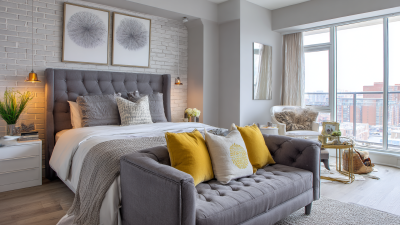
Transform Your Space: Innovative Bathroom Makeover Ideas for a Stunning Refresh
-
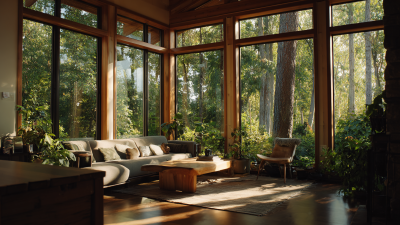
Exploring the Energy Efficiency Benefits of Modern Home Windows for Sustainable Living
-
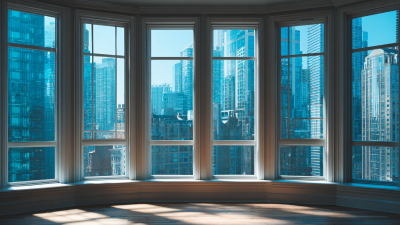
Maximizing Ventilation and Natural Light: The Essential Guide to Choosing the Perfect Bathroom Window
-
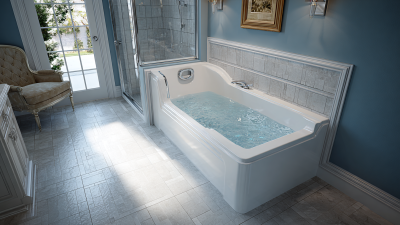
Why Walk In Tubs Are the Ultimate Solution for Safe and Relaxing Bathroom Experiences
-
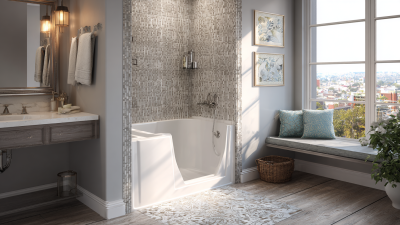
The Ultimate Guide to Choosing the Perfect Step In Bathtub for Your Home